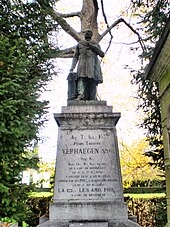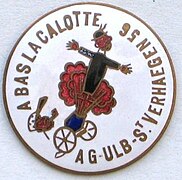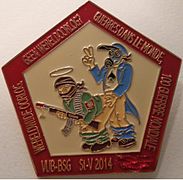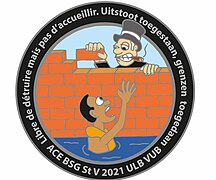
Brussels, officially the Brussels-Capital Region, is a region of Belgium comprising 19 municipalities, including the City of Brussels, which is the capital of Belgium. The Brussels-Capital Region is located in the central portion of the country and is a part of both the French Community of Belgium and the Flemish Community, but is separate from the Flemish Region and the Walloon Region, located less than 4 kilometres (2.5 mi) to the south. Historically Dutch-speaking, Brussels saw a language shift to French from the late 19th century. Nowadays, the Brussels-Capital Region is officially bilingual in French and Dutch, although French is the majority language and lingua franca. Brussels is also increasingly becoming multilingual. English is spoken widely and many migrants and expatriates speak other languages as well.

The Vrije Universiteit Brussel is a Dutch and English-speaking research university located in Brussels, Belgium. It has four campuses: Brussels Humanities, Science and Engineering Campus, Brussels Health Campus, Brussels Technology Campus and Brussels Photonics Campus.

The Free University of Brussels was a university in Brussels, Belgium. Founded in 1834 on the principle of "free inquiry", its founders envisaged the institution as a free-thinker reaction to the traditional dominance of Catholicism in Belgian education. The institution was avowedly secular and particularly associated with Liberal political movements during the era of pillarisation. The Free University was one of Belgium's major universities, together with the Catholic University of Leuven and the state universities of Liège and Ghent.
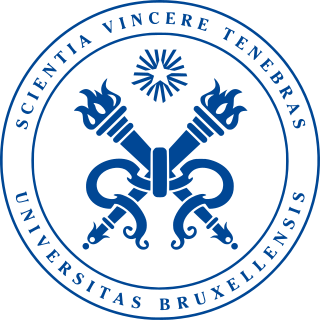
The Université libre de Bruxelles is a French-speaking research university in Brussels, Belgium. ULB is one of the two institutions tracing their origins to the Free University of Brussels, founded in 1834 by the lawyer and liberal politician Pierre-Théodore Verhaegen.

The City of Brussels is the largest municipality and historical centre of the Brussels-Capital Region, as well as the capital of the Flemish Region and Belgium. The City of Brussels is also the administrative centre of the European Union, as it hosts a number of principal EU institutions in its European Quarter.
The Belgian American Educational Foundation (BAEF) is an educational charity. It supports the exchange of university students, scientists and scholars between the United States and Belgium. The foundation fosters the higher education of deserving Belgians and Americans through its exchange-fellowship program. Since 1977, Dr. Emile Boulpaep is the president of the BAEF.

Pierre-Théodore Verhaegen was a Belgian lawyer and liberal politician, known as the founder of the Free University of Brussels. He was twice chairman of the Belgian Chamber of Representatives.

Saint-Géry Island or Sint-Goriks Island was the largest island in the river Senne in Brussels, Belgium. It was named after Saint Gaugericus of Cambrai, who according to legend, built a chapel there around 580. It ceased to exist as an island when the Senne was covered over in the late 19th century, and a former covered market, the Halles Saint-Géry/Sint-Gorikshallen, was built in its centre. Since the late 20th century, this building has been rehabilitated as an exhibition space.

The Francization of Brussels refers to the evolution, over the past two centuries, of this historically Dutch-speaking city into one where French has become the majority language and lingua franca. The main cause of this transition was the rapid, compulsory assimilation of the Flemish population, amplified by immigration from France and Wallonia.
Science and technology in Brussels, the central region of Belgium (Europe), is well developed with the presence of several universities and research institutes.

The Temple of the Augustinians, alternatively the Church of the Augustinians in Brussels, Belgium, was a Brabantine Baroque-style church designed and built from 1621 to 1642 by the architect Jacob Franquart for the Augustinians order. It was located on the Place de Brouckère/De Brouckèreplein in central Brussels until its demolition in 1893–94. Its facade's masonry, however, was preserved, being disassembled and reconstructed as the facade of the Church of the Holy Trinity in Ixelles.
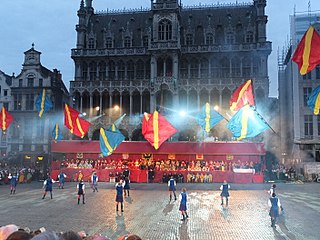
The Ommegang of Brussels is a traditional Ommegang, a type of medieval pageant, celebrated annually in Brussels, Belgium.

The following is a timeline of the history of Brussels, Belgium.
The Folklore of Belgium is extremely diverse and reflects the rich legacy of cultural and religious influences which have acted on the region throughout its history, even before the establishment of the nation of Belgium in 1830. Much of Belgian folklore is unique to the region in which it is commemorated. Many aspects of folklore are manifested in public processions and parades in Belgian cities; traditions which are kept alive for the amusement of locals and tourists alike.
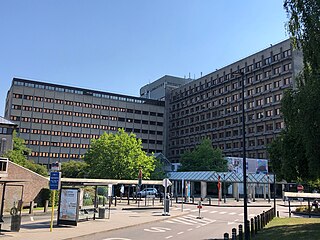
Erasmus Hospital is a teaching hospital in the municipality of Anderlecht, Brussels, Belgium. It is a research hospital associated with the Université libre de Bruxelles (ULB), and was opened in 1977. It has 1,048 beds and 4,000 employees, treating between 25,000 and 30,000 inpatients and between 350,000 and 400,000 outpatients each year.

The Church of Our Lady of Victories at the Sablon, or the Church of Our Lady of the Sablon, is a Roman Catholic church located in the Sablon/Zavel district, in the historic centre of Brussels, Belgium. It is dedicated to Our Lady of the Sablon.
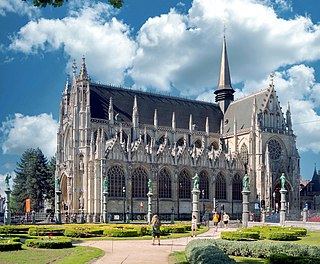
The Sablon or Zavel is a neighbourhood and hill in the historic upper town of Brussels, Belgium. At its heart are twin squares: the larger Grand Sablon or Grote Zavel square in the north-west and the smaller Petit Sablon or Kleine Zavel square and garden in the south-east, divided by the Church of Our Blessed Lady of the Sablon. This area is served by Brussels-Chapel railway station and Brussels-Central railway station, as well as the tram stop Petit Sablon/Kleine Zavel.

Maxime Steinberg (1936–2010) was a Belgian historian and teacher who wrote extensively on the Holocaust in Belgium. He has been described as "Belgium's principal Holocaust historian" and was best known for his three-part history of the subject entitled L'Étoile et le Fusil, published in 1983–87.
University of Brussels may refer to several institutions in Brussels, Belgium:
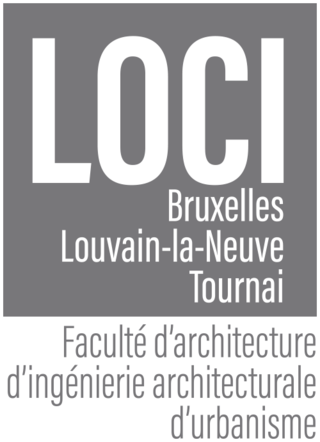
The Faculty of Architecture, Architectural Engineering and Urban Planning, often called LOCI, is the 14th faculty of the University of Louvain, Belgium. It became an independent faculty in 2009, with the merger of three institutes founded between 1867 and 1882, and is active in Brussels (Saint-Gilles), Tournai and Louvain-la-Neuve.

